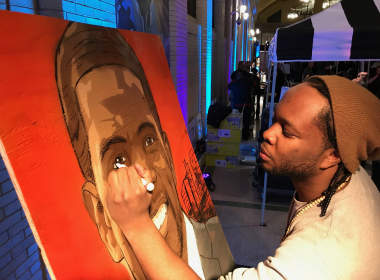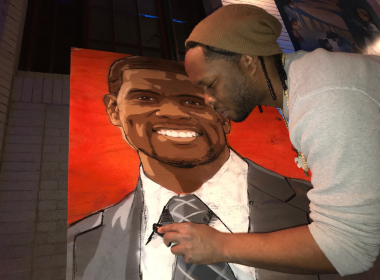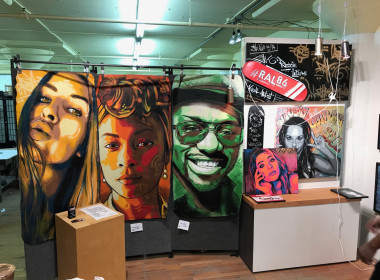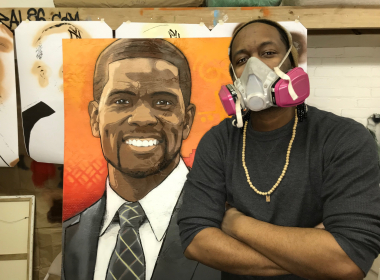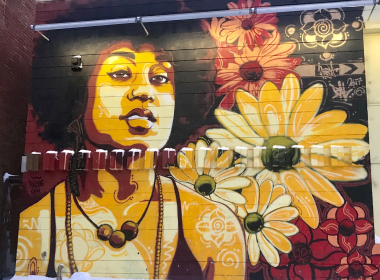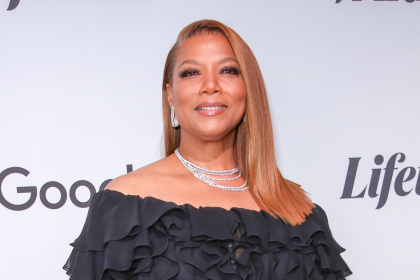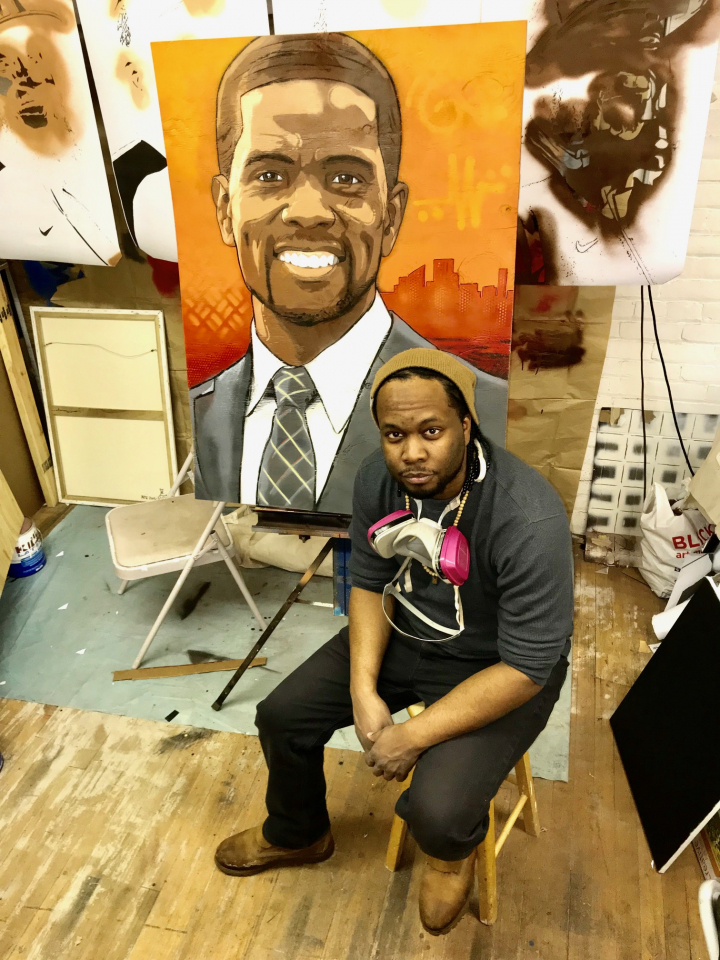
Nestled in the Northeast Minneapolis Arts district, you will find visual artist Reggie LeFlore doing what he loves best, being creative. LeFlore, who identifies as a visual artist, was influenced by the culture of street art. LeFlore states, “Street art and graffiti culture was something I shifted to about six years ago. I’ve been an illustrator ever since I was a young kid.” He went on to say, “I was inspired by the cartoons and video games I grew up with, and decided that I wanted to create those same stories through the things I sketched and painted.” His progression from sketches as a child to now murals and paintings of the Honorable Melvin Carter, the new mayor of St. Paul, was a deliberate yet gradual and natural evolution.
What inspires you artistically/creatively?
The culture of street art and graffiti has been a major source of my inspiration during the past several years. Before I shifted into using aerosol and working on public spaces, I did a lot of freelance graphic design work that, at the time, was only limited to just being viewed on a computer or on some small prints. Then after I started shadowing a few aerosol artists in my hometown, I saw that you could take those same digital elements and work through a process that allows you to “translate” them to more tangible, off-the-computer surfaces (whether it would be through stencils, freehand pieces that came from a sketchbook, etc). This made me really excited to use aerosol because, in its own way, aerosol is also a medium that suffers through its own limitations (can’t use it in enclosed spaces without a respirator, for instance), but it’s tied to a culture that’s able to take on so many different styles and techniques.
What separates you from others in your field? What is unique to the experience that you create?
My work can be viewed as a sort of “hybrid form” of several styles. I have a background in illustration and graphic design, which has helped me understand how to draw and compose big projects, and I also have a solid six years of experience in using aerosol and stencil work. All of these things combined has been helpful in making a wide range of work, from small/mid sized canvases to large scale mural pieces. And they all can be done rather quickly.
You recently painted a portrait of the new mayor of St. Paul, Melvin Carter. Were you commissioned to do the portrait?
Yes, with the intention of having the piece donated to Mayor Melvin Carter and his family.
What was the inspiration behind the painting?
The fact that he’s St Paul’s first Black mayor was inspiration enough. Apart from that, I really wanted to make sure that his presence in this image was bold and true to his reference, and so I did it in the best way I knew how.
I always take time to study other techniques that are out there, whether it’d be through experimenting with lighting or trying out other paint brands. Last year, I painted a mural entirely freehanded (unlike most of my other projects that use a lot of stencils), and so I’m hoping to take on something similar to that later on this year.
Are there are any widely held misconceptions about street art culture?
Oh absolutely. Almost any time I mention that I use aerosol, I get into a conversation about graffiti and its place in various communities. One thing I find myself saying often is that I’m not a graffiti artist, although I get referred to such a term all the time. I’m not a part of any crews, nor am I out in the streets “getting up,” so I’d rather leave that term for the folks that are out there actually doing that kind of stuff. I just happen to be inspired by them and use the same kind of materials. Additionally, if I were to take it a bit further, I feel that street art culture sort of encompasses graffiti and its other various styles, much like all the subgenres found in the music of hip hop, like trap, grime, g-funk, etc. It’s not a categorization that everyone agrees with, but I feel like it helps in making it easier to have that kind of discussion with certain folks.
Describe the street art culture of Minneapolis/St.Paul.
Very welcoming. One of my first collaborative projects was on a mural at the old Intermedia Arts building in Uptown, and it involved a lot of members of the street art scene here. I met with a few crew members, old school writers, and a few illustrators that were looking to use aerosol for the first time — all with different skill sets and varying experiences, but we all had a lot of love for one another.
Who do you consider to be your peers in your field? Who do you see/use as examples for you to emulate?
Along with the street artists I met through Intermedia Arts, I have a lot of folks I met through other institutions and organizations that I would consider my peers — like Hennepin Theatre Trust (and their Made Here project), Minneapolis College of Art and Design (MCAD), Lake Street Council, Northrup King, the folks at SOOVAC in Uptown, etc. They’re peers in the sense that we all share a goal in contributing to the arts community in the Twin Cities.
Name two of your top role models: one from your industry and one from outside of it.
I don’t believe in having any specific role models, but if I did, the two that I’d probably consider would be Gerard Pefung and Joan Vorderbruggen. Gerard is an artist that literally made me want to paint on buildings and work in more public art projects. He and I went to high school together, and took some of the same art classes, but then we lost touch with each other a few years after we graduated. When we met up a few years later, I saw a major gap in between our skill levels — I was just doing graphic design and illustrative work, but he ended up painting a few big murals in town. After spending some time in his studio, and after seeing all the creative spaces he involved himself in, I decided that I wanted to transcend from my digital elements and work on bigger pieces. Joan isn’t a street artist per se, but she constantly inspires me to understand my worth as an artist. She currently serves as director of Public Art and Placemaking for Hennepin Theatre Trust, where she spends her seemingly-limitless energy on supporting the arts scene and surrounding communities. Seeing her work with other businesses and organizations through the Made Here project she spearheads is something of a wonder for me.
See his work below:

